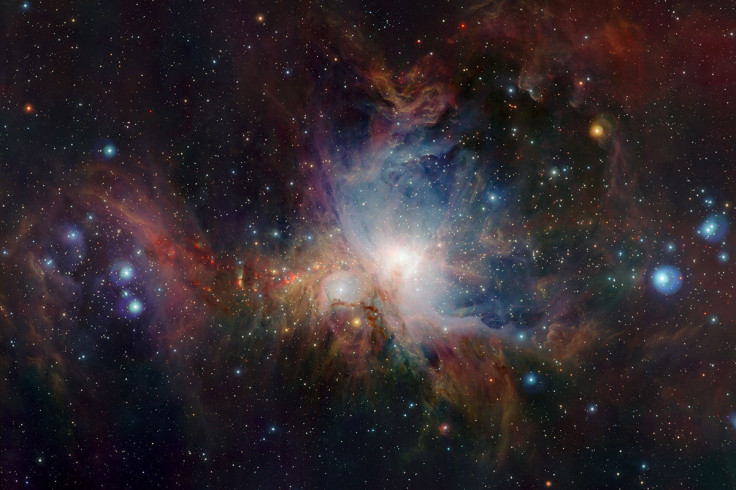Death of a Solar System: Great Orion Nebula 'Monster' Stars End Formation of Young Worlds

The Great Orion Nebula, the giant gas cloud which acts as a giant star factory, may also shut down nearby planetary formation, according to new research.
Astronomers at the National Research Council of Canada in Victoria, British Columbia, used high frequency radio observations through the radion telescopes at the Atacama Large Millimeter/submillimeter Array (ALMA) in northern Chile to show how the gas cloud destroys young planets.
The Orion Nebula, which is located around 1,400 light-years away from Earth, contains hot, young and volatile stars which blast away at planets and the associated debris which orbit around nearby infant stars.
Rita Mann, the lead author of the study, explained: "O-type stars, which are really monsters compared to our sun, emit tremendous amounts of ultraviolet radiation, and this can play havoc during the development of young planetary systems."
The new data reveals that the newborn stars and their forming planets located within 0.1 light-years of one of these explosive stars are doomed. They will have their coverage of dust and gas blown away within a few million years, which effectively ends nearby planetary formation.
Mann added: "Using ALMA, we looked at dozens of embryonic stars with planet-forming potential and, for the first time, found clear indications where protoplanetary disks simply vanished under the intense glow of a neighbouring massive star."
James Di Francesco, also with the National Research Council of Canada, told Nature World News: "Massive stars are hot and hundreds of times more luminous than our Sun. Their energetic photons can quickly deplete a nearby protoplanetary disk by heating up its gas, breaking it up, and sweeping it away."
According to researchers, the latest study offers an insight into the birth and death of solar systems.
The Orion Nebula is a diffuse nebula which is situated south of Orion's Belt, within the constellation of Orion. It is the closest region of massive star formation to Earth and is a stellar nursery, where thousands of sunlike stars and their stars are born.
These stars explode in a supernova and seed surrounding space with the heavy elements that initiate the formation of the next generation of stars. Before they explode, they are deadly for young planets.
Mann said that the investigation with ALMA suggest that extreme [ultraviolet] regions are "inhospitable" as well as being "downright hazardous for planet formation".
She added: "With enough distance, however, it's possible to find a much more congenial environment. This work is really the tip of the iceberg of what will come out of ALMA; we hope to eventually learn how common solar systems like our own are."
According to National Geographic, the brightest stars belonging to Orion can be seen towards the southern sky on a clear evening.
The latest research was published in the Astrophysical Journal.
© Copyright IBTimes 2025. All rights reserved.






















